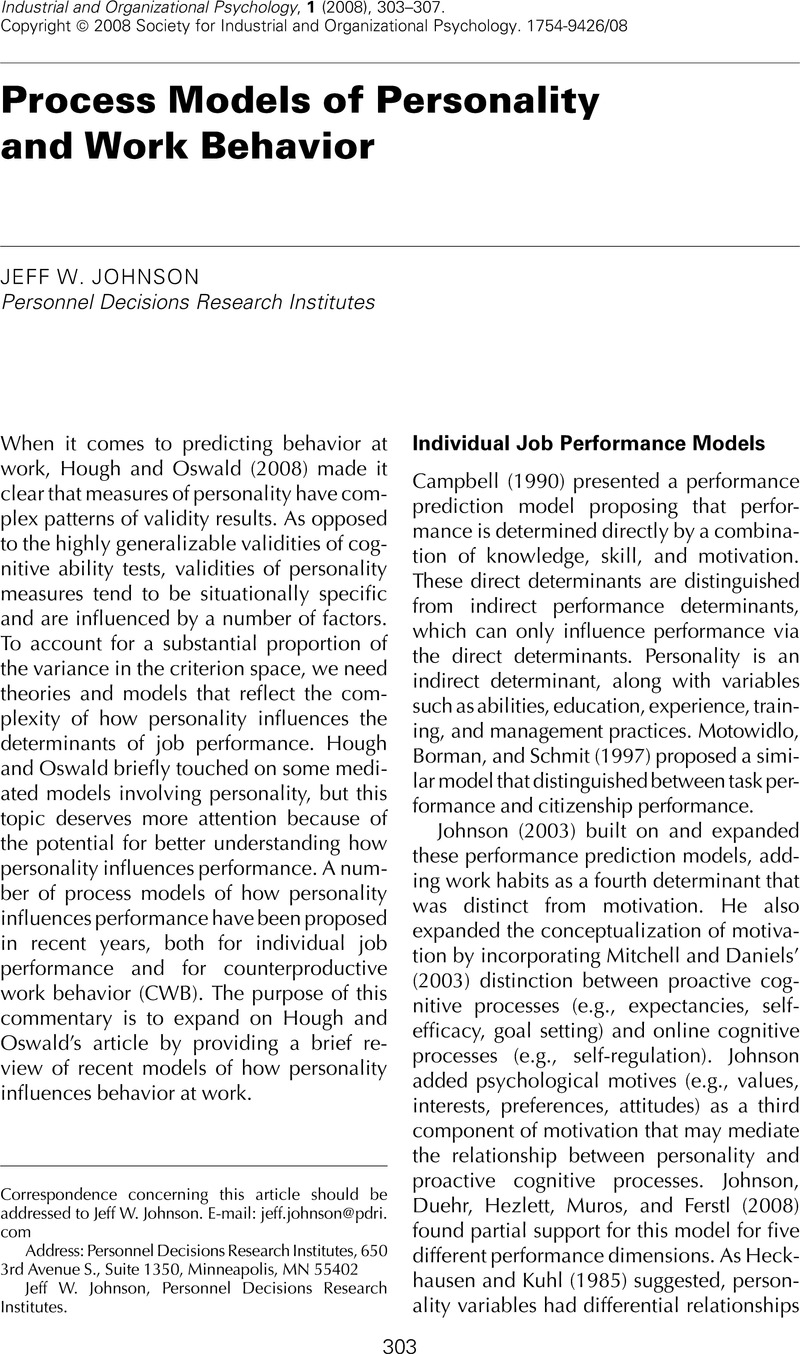Crossref Citations
This article has been cited by the following publications. This list is generated based on data provided by Crossref.
Oswald, Frederick L.
and
Hough, Leaetta M.
2008.
Personality Testing and Industrial–Organizational Psychology: A Productive Exchange and Some Future Directions.
Industrial and Organizational Psychology,
Vol. 1,
Issue. 3,
p.
323.
Burns, Gary N.
and
Christiansen, Neil D.
2011.
Self‐efficacy in the Workplace: Linking personality to domain‐specific efficacy beliefs.
International Journal of Selection and Assessment,
Vol. 19,
Issue. 4,
p.
429.
Liang, Chih-Chin
2013.
Customers Waiting in Front of a Retail Store.
p.
1310.
Goad, Emily A.
and
Jaramillo, Fernando
2014.
The good, the bad and the effective: a meta-analytic examination of selling orientation and customer orientation on sales performance.
Journal of Personal Selling & Sales Management,
Vol. 34,
Issue. 4,
p.
285.
Liang, Chih-Chin
2016.
Queueing management and improving customer experience: empirical evidence regarding enjoyable queues.
Journal of Consumer Marketing,
Vol. 33,
Issue. 4,
p.
257.
강민정
송태호
and
서해진
2018.
The Impact of Salesperson’s Personality Type on Sales Performance and Job Satisfaction: Focus on Relationship-driven Sales Behavior.
Journal of Distribution and Management Research,
Vol. 21,
Issue. 6,
p.
147.
Agnihotri, Raj
Yang, Zhiyong
and
Briggs, Elten
2019.
Salesperson time perspectives and customer willingness to pay more: roles of intraorganizational employee navigation, customer satisfaction, and firm innovation climate.
Journal of Personal Selling & Sales Management,
Vol. 39,
Issue. 2,
p.
138.





